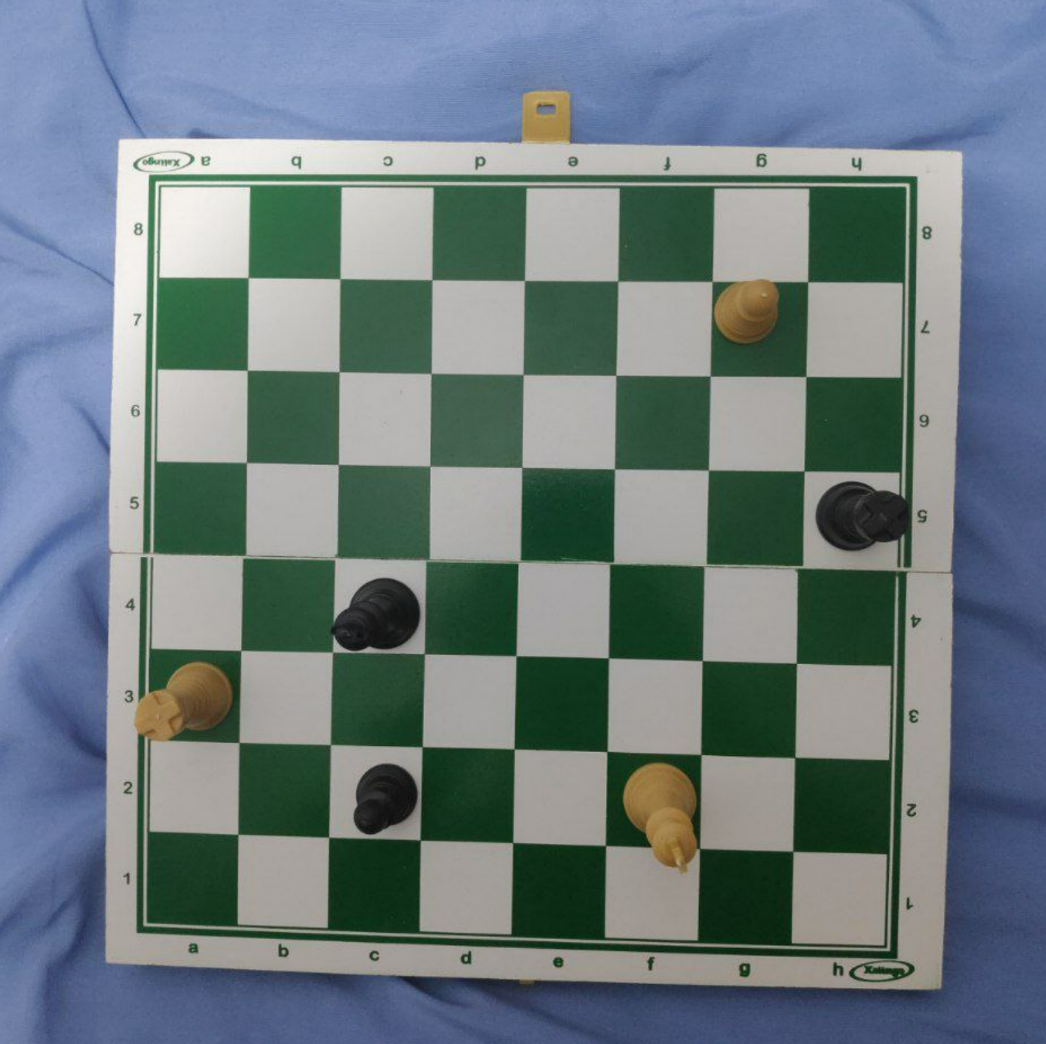Recognition of a chess board and pieces using image processing techniques such as enhancement, filtering and segmentation. Final project for Digital Image Processing course at USP - São Carlos. Our aim is to process the images and identify the pieces of the current match represented on the board.
- André L. M. Fakhoury: finding the dataset and developing part of the source code;
- Gustavo V. V. Soares: developing the source code and designing the CNN.
Overall, we had the same roles, and developed this project at the same time as a team.
The main objective of this project is to recognise a chess position using a image of a chess board as input, utilising some techniques of Digital Image Processing and a Convolutional Neural Network. The chess position will be represented using the Forsyth-Edwards Notation (FEN).
The dataset is a mix of existent photos from online repositories (thanks, guys!) and photos of a physical chessboard and chess pieces taken by us. They consist of a upper view of a chessboard, and the filenames are the FEN of the current position. Here is an example of a picture taken by us:
The filename of this image is 8-6P1-8-7r-2k5-R7-2p2K2-8.png, which corresponds to the FEN of the current position. Note that the slashes are replaced to hyphens, as slashes are not allowed in filenames. Also, there is no information about whose turn it is (white or black to play) and the final score of the match (because there is no way of discovering it by just looking at the image).
The image preprocessing is done using OpenCV and Numpy. The source code is available in the jupyter notebook notebook.ipynb. Basically, the pipeline for this project is:
First of all, the image is read (using the library imageio).
Now, some transformations are applied to the image, it is converted to grayscale, a Gaussian Blur to reduce the noise is applied and then the Canny method is used to detect the edges of the figure. After that, a morphological operation of Dilation is done to fill some gaps on the edges.
Then, we utilize the findContours method from OpenCV to find the coordinates of the image borders. Now, as the chessboard can be seen as a regular polygon, we apply the approxPolyDP to approximate every contour to another closed shape, consisting of a smaller number of vertices.
With the contours extracted and minimized to a simpler shape, we can try to locate all the squares of the image - and then, it's expected that the chessboard is a large square with several squares inside.
With the board correctly located, we can use its corners to delimit the image sides. It helps to ignore some extra noise and useless information that may exist outside the board, so the next step can be done easier.
Some processes of the pipeline can be seen in the following image:
In this step, we use a convolutional neural network to analyse the pieces on each cell of the board. The network takes as input a 512x512 image of the cropped chessboard and outputs the identified piece of each postion. The network identifies the piece type (king, queen, rook, knight, bishop, pawn or empty) with no color information (white or black).
The image below represents our trained model predictions, blue means correct, red means error and yellow means partially correct (the model identifies that the position is non empty but the identified type is wrong). The value above each position is the score, each correct position is worth one point and each partially correct is worth half a point.
Our preprocessing pipeline was able to detect the chessboard in most of the input images from the dataset, it was correctly detected in about 480 out of 500 images (96% accuracy). For the boards that failed to be detected, our pipeline was unable to get proper contours for the input image. In some of those cases, the board contour merged with a nearby one, causing it to not form a four sided polygon.
Our CNN scored a total 752 out of 1024 in the 16 test images (about 73%). Most pieces were correctly identified, however the network outputs several non-existent pieces. This could by a result of the loss function used, which attributes a smaller weight to the empty positions.


